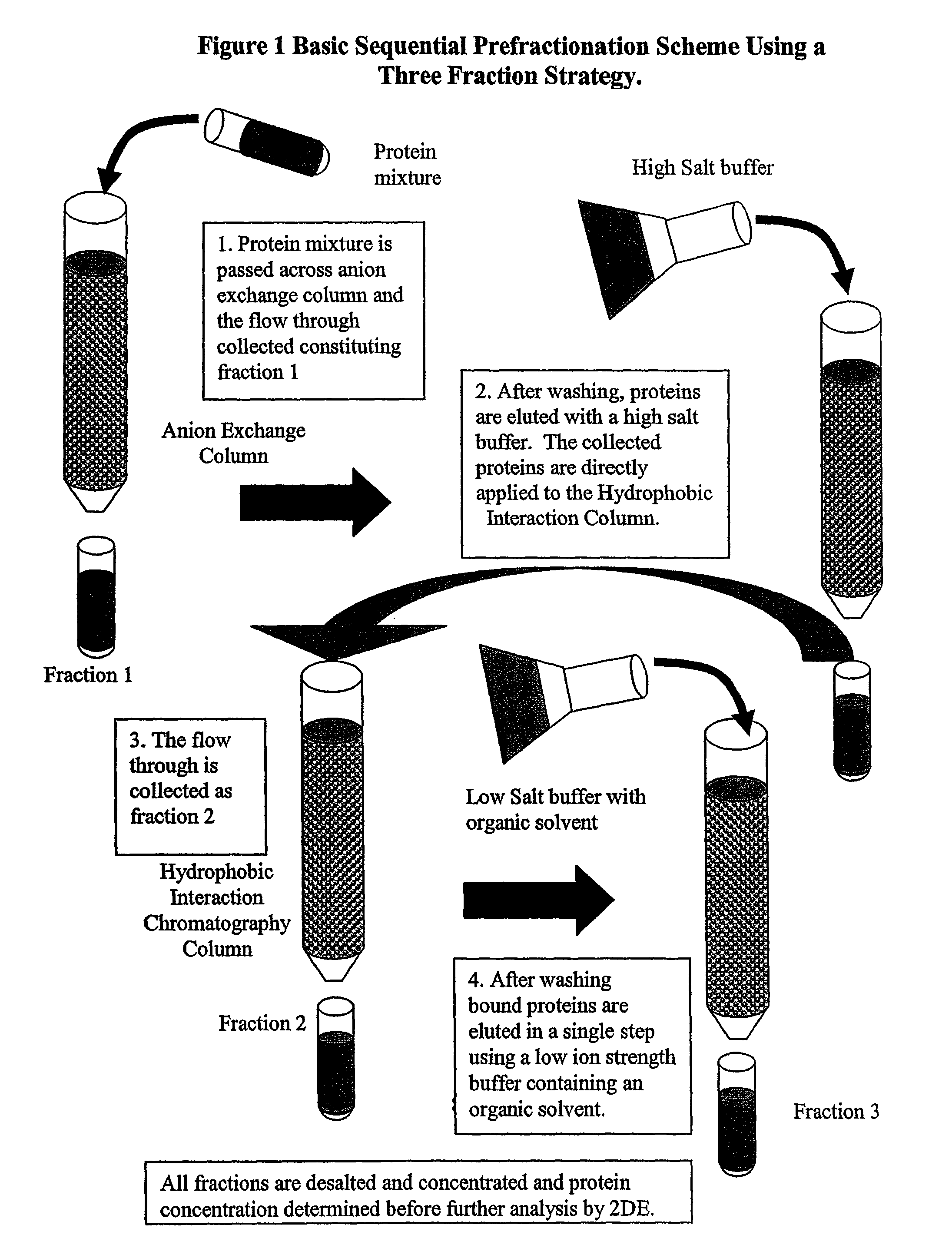Procedure for the fractionation of proteins by using sequential ion exchange and hydrophobic interaction chromatography as prefractionation steps before analysis by two dimensional electrophoresis
a technology of hydrophobic interaction and protein fractionation, which is applied in the field of devices, systems, and methods for fractionating proteins, can solve the problems of too cumbersome application of all-in-one protein analysis, high cost of equipment, and inability to apply ultra-centrifuges, etc., and achieves the resolution of proteins that is easy to be analyzed and the incidence of the same protein is low. , the effect of simplifying the chromatography
- Summary
- Abstract
- Description
- Claims
- Application Information
AI Technical Summary
Benefits of technology
Problems solved by technology
Method used
Image
Examples
example 1
[0053]Four T-75 flasks of HT-29 carcinoma cell cultures were grown until confluent in McCoy's modified medium (Gibco) with 10% FBS, and 1% Penicillin-Streptomycin (Gibco). Media was removed and cultures were rinsed two times with PBS, then lysed with a low ionic strength lysis buffer ((50 mM Tris, pH 7.5, 10 mM DTT, and a protease Inhibitor cocktail (Sigma diluted 100:1), followed by 3 rapid freeze / thaw cycles. Individual lyses were pooled and centrifuged for 20 minutes at 24,000×G at four degrees Celsius, followed by filtering with a 0.2 μm syringe filter. Total protein was determined by Bradford's dye binding assay. An aliquot was diluted 5:1 in 2DE lysis buffer (7 M urea, 2 M thiourea, 4% CHAPS, 4 mM tributyl phosphine (TBP), 0.5% ampholyte solution, and a trace of bromophenol blue) and analyzed by 2DE and is designated the traditional method.
[0054]Three milligrams of the cytosolic extract was applied to an ion exchange column (Poly-Prep gravity column (Biorad) containing 1 ml be...
PUM
| Property | Measurement | Unit |
|---|---|---|
| volume | aaaaa | aaaaa |
| mass | aaaaa | aaaaa |
| mass | aaaaa | aaaaa |
Abstract
Description
Claims
Application Information
 Login to View More
Login to View More - R&D
- Intellectual Property
- Life Sciences
- Materials
- Tech Scout
- Unparalleled Data Quality
- Higher Quality Content
- 60% Fewer Hallucinations
Browse by: Latest US Patents, China's latest patents, Technical Efficacy Thesaurus, Application Domain, Technology Topic, Popular Technical Reports.
© 2025 PatSnap. All rights reserved.Legal|Privacy policy|Modern Slavery Act Transparency Statement|Sitemap|About US| Contact US: help@patsnap.com



